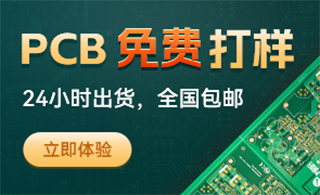碳化硅宽带隙半导体材料生长技术及应用
出处:zab 发布于:2007-04-29 10:30:33
王强,李玉国,石礼伟,孙海波 | ||||||||
(山东师范大学半导体研究所,山东 济南 250014) | ||||||||
| 摘要:概括了宽带隙半导体材料碳化硅的主要特性及生长方法,介绍了其在微电子及光电子领域的应用,并对其发展动态及存在问题进行了简要评述。 关键词:宽带隙半导体;碳化硅;光电子学 1 Introduction As it is well known,the traditional Si and GaAs devices are inapplicable at the temperature above 250 ℃,and they cannot perform well under the conditions of high frequency,high power and strong radiation. When compared with Si and GaAs,SiC material has many advantages,such as wide bandgap,high breakdown field,high thermal conductivity,high saturated drift velocity of electrons,stable chemical properties and survival ability in strong radiation,which make it a promising candidate in the adverse circumstance where the silicon devices have been disabled. Taking the advantage of its wide bandgap(23 eV~33 eV),the blue,green and ultraviolet lightemitting devices and photo detectors have been fabricated. What is more,a naturally formed thin layer of SiO2 on its surface is advantageous to the devices based on SiC MOS,which is unique,when compared with other compounds such as GaN and AlN,etc. Nowadays the studies of SiC are mainly focused on the crystalline growth and the formation of thin films of 4HSiC,6HSiC,3CSiC,and the investigation of SiC devices have also gained much concern in recent years. In this article,the progresses of SiC are discussed,and the existing problems are appraised and commented. 2The basicproperties of SiC 2.1The semiconductor properties of SiC SiC material has extraordinary thermal stability and chemical stability. There is no dopant diffusion at any rational temperature. At room temperature,it can endure any acid etching. Other excellent properties of SiC are showed in Table 1. 2.2 Poly types of SiC The structure of SiC is tetragonal(Fig.1). The bonding of Si and C atom is rather strong,but the bonding between the layers is comparatively weak,therefore SiC has more than 200 polytypes. According to the crystal phases of SiC,they can be sorted into three kinds,they are,cubic,hexagonal and rhombohedral phases. The thick stacking has three different positions,which are labeled A,B and C. Depending on the sequence of stacking,SiC crystals will have cubic zincblende structure or hexagonal wurtzite structure. For example,if the stacking sequence is ABCABC...,we will obtain cubic zincblende structure,which is labeled as 3CSiC(or βSiC),while the sequence is ABAB...,we will get wurtzite structure,which is labeled 2HSiC. Other polytypes,such as 4HSiC and 6HSiC are the mixture of the above two kinds of stacking(Fig.2). Different polytypes show the same chemical properties,but they have different physical properties,especially in respect of semiconductor properties. Heterostructure and superlattice of SiC polytypes with entirely matched crystal lattice have been made into SiC devices with excellent performance,utilizing those of the above properties of SiC. 3 The prearation of SiC 3.1 The growth of bulk crystal A majority of semiconductor crystals can be prepared in their melted state or in solution. But SiC cannot be melted under traditional condition,and it cannot be prepared in any solutions until now. The Acheson Method is the earliest method to form SiC crystal. In the year of 1955,Lely used the sublimation method(without seed crystal)to form 3CSiC with pin shape. From the late 70 s to the early 80 s of last century,Tairov and Tsvetkov improved the Lely Method,and realized the seeded sublimation of SiC. 3.1.1SiC prepared by Acheson Method For a long time,the growth of SiC bulk crystal had been the bottleneck of the application of SiC in the field of electronics. In the early years,people used the Acheson Method to form SiC(Fig.3). Silica and carbon were mixed and reacted at the temperature above 2500 ℃,so someone said that,“Silicon carbide is born in fire”. The carborundum(SiC)formed by Acheson Method is mainly used as materials for abrasion and cutting,but it can also be used as electronic material for rather low requirement. Due to such disadvantages as high growth temperature and poor crystal quality,it is being replaced by subsequent techniques such as Lely Method,modified Lely Method and CVD epitaxy method. 3.1.2 SiC prepared by the Lely Method and the modified Lely Method The crystal SiC formed by Lely Method(Fig.4)has greatly improved crystal quality,but its growth rate is rather low,and the type of the crystal cannot be controlled. Nowadays SiC formed by this method is usually used as substrate to obtain high quality epitaxial crystal. From the 80 s of last century,the Sublimation method(modified Lely Method(Fig.5)),which is also called Physical Vapor Transport Method(PVT),has been employed to grow SiC crystal,and it has been the predominant method for SiC production. But the growth temperature is still high(above 2100 ℃),large amount of micropipes and high density of dislocations exist in the crystal. and the control of the type of the crystal is difficult. Until the 90 s of the last century,the fabrication technique had been greatly improved,and the 4HSiC and 6HSiC wafers with low density of micropipe defects(10~100 micropipes/cm2)had been obtained. The doping of SiC is often in the process of its growth,and the ntype SiC is doped by nitrogen,while the ptype is doped by aluminum. The doping after growth is often realized by the ion implantation technology,and the common diffusion method cannot get high doping concentration. Due to the nitrogen gas ambience in the growth process,the unintentionally doped SiC is of n type. Nowadays there are four companies who can provide commercialized SiC wafers,that is,CREE Research Inc.(USA),Nippon Steel(Japan),AT MI Corp.(USA),SiCrystal AG(Germany),and the SiC wafers are mostly prepared by the sublimation method. 3.2 The growth of SiC thin film Due to the difference of the substrate,there are two different epitaxy methods to form SiC thin film,they are,homoepitaxy and heteroepitaxy. Because of the large mismatch of the lattices(about 20%)and the large difference of the thermal expansion coefficients(about 8%),large amount of dislocations and stresses will be introduced in during the growth process. Before epitaxy,the silicon subasrate is usually carbonized at first to form a thin buffer layer. Then high quality epilayer of SiC will be obtained on it. Because of the commercialization of SiC wafers with rather big size,the homoepitaxy of SiC has developed rapidly,especially the techniques of stepcontrolled epitaxy and sitecompetition epitaxy. The methods to form SiC thin film include sputtering,laser ablation,sublimation epitaxy,liquid phase epitaxy(LPE),chemical vapor deposition(CVD),molecular beam epitaxy(MBE),electron cyclotron resonance chemical vapor deposition(ECRCVD)and metal organic chemical vapor deposition(MOCVD). The cool wall CVD method(Fig.6)is the most successful one. The precursors(often SiH4,C3H8 and CH4)are transported by hydrogen to the hot zone where the reaction takes place. During the reaction,C3H8 is introduced firstly to form the buffer layer,then SiH4 is introduced also,and the temperature is kept at about 1300 ℃,subsequently the thin film of SiC is formed. The growth rate is rather low,usually several μm/h. Afterwards the Hot Wall CVD method had been introduced,and the growth rate had been increased to 05 mm/h,while the control of the growth condition became difficult. 4 The investigation of SiC devices Due to the breakthrough of the growth technology of SiC crystal and its thin film,SiC devices have been extensively investigated in recent years. The applications of 4HSiC and 6HSiC devices in the fields of high frequency,high temperature,high power and optoelectronics are shown in Table 2. 5 Conclusion and prospects In the latest decades,much strive has been contributed to the study of SiC,and great breakthrough has been gained. The size of SiC wafers has been increased year by year,the Φ75 cm wafers have been put into market,and the Φ10 cm wafers have been successfully formed in labs. The quality of SiC wafers is also improved year by year,the micropipe defects of the Φ5 cm wafers has been reduced to <10/cm2,while those of the Φ25 cm wafer have been eliminated. There are still many technical problems needing to be solved to sufficiently explore the potential applications of SiC,which include:(1)the epitaxy mechanism of SiC thin film is not so clear;(2)3CSiC can only be obtained by heteroepitaxy,therefore there are kinds of defects that cannot be eliminated;(3)some key techniques such as etching,oxidization,ohmic contact and package,are not so mature;(4)duo to its instinct indirect bandgap structure,the application of SiC in the field of optoelectronics has been severely handicapped. | ||||||||
本文摘自《微纳电子技术》 |
上一篇:管式电炉合成氮化镓晶粒的研究
下一篇:SiC单晶生长
版权与免责声明
凡本网注明“出处:维库电子市场网”的所有作品,版权均属于维库电子市场网,转载请必须注明维库电子市场网,https://www.dzsc.com,违反者本网将追究相关法律责任。
本网转载并注明自其它出处的作品,目的在于传递更多信息,并不代表本网赞同其观点或证实其内容的真实性,不承担此类作品侵权行为的直接责任及连带责任。其他媒体、网站或个人从本网转载时,必须保留本网注明的作品出处,并自负版权等法律责任。
如涉及作品内容、版权等问题,请在作品发表之日起一周内与本网联系,否则视为放弃相关权利。
- 电路仿真软件哪个比较好?2024/4/23 17:50:46
- TCP/IP协议包括哪些协议2024/4/22 17:33:22
- cps是什么意思?cps的含义_cps的特征2024/4/16 17:56:11
- 你所知道的DCS系统都有哪些?2024/4/16 17:50:53
- 煤矿人员定位系统的功能及重要性分析2024/4/16 17:43:54









